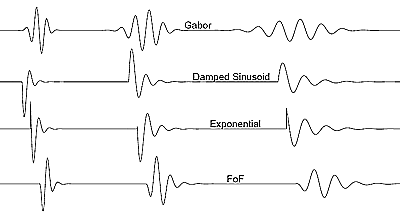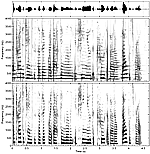Interactive Digital Multimedia
IGERT Summer Projects
| Investigating Matching Pursuit Decompositions of Non-Noisy Speech Signals
|
||||||||
Students Bob Sturm, Elec & Comp Engineering
|
Faculty Advisors
|
|||||||
Abstract The relatively recent signal time-decomposition
method "matching pursuits" (MP) may provide an interesting
tool for high-resolution time-frequency distributions, signal denoising,
and audio coding. This method essentially finds good approximations
of signals using a linear combination of "atoms" selected
from a non-orthogonal set of elementary waveforms, or a "dictionary."
A signal can thus be represented by functions that are well-localized
in time and frequency, or are better correlated to the signal than
orthogonal bases such as a Fourier basis.
|
|
Projects
|
||||||


